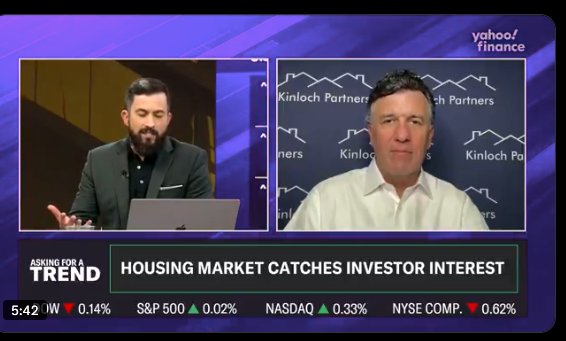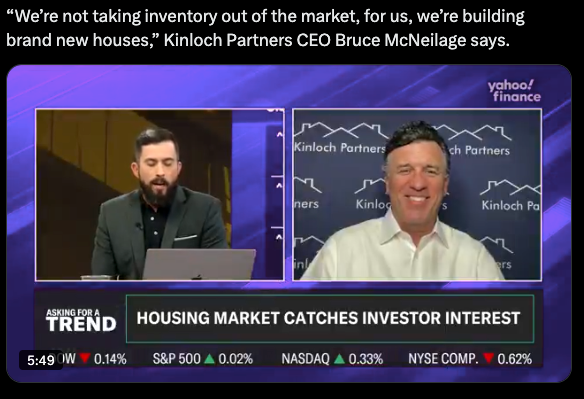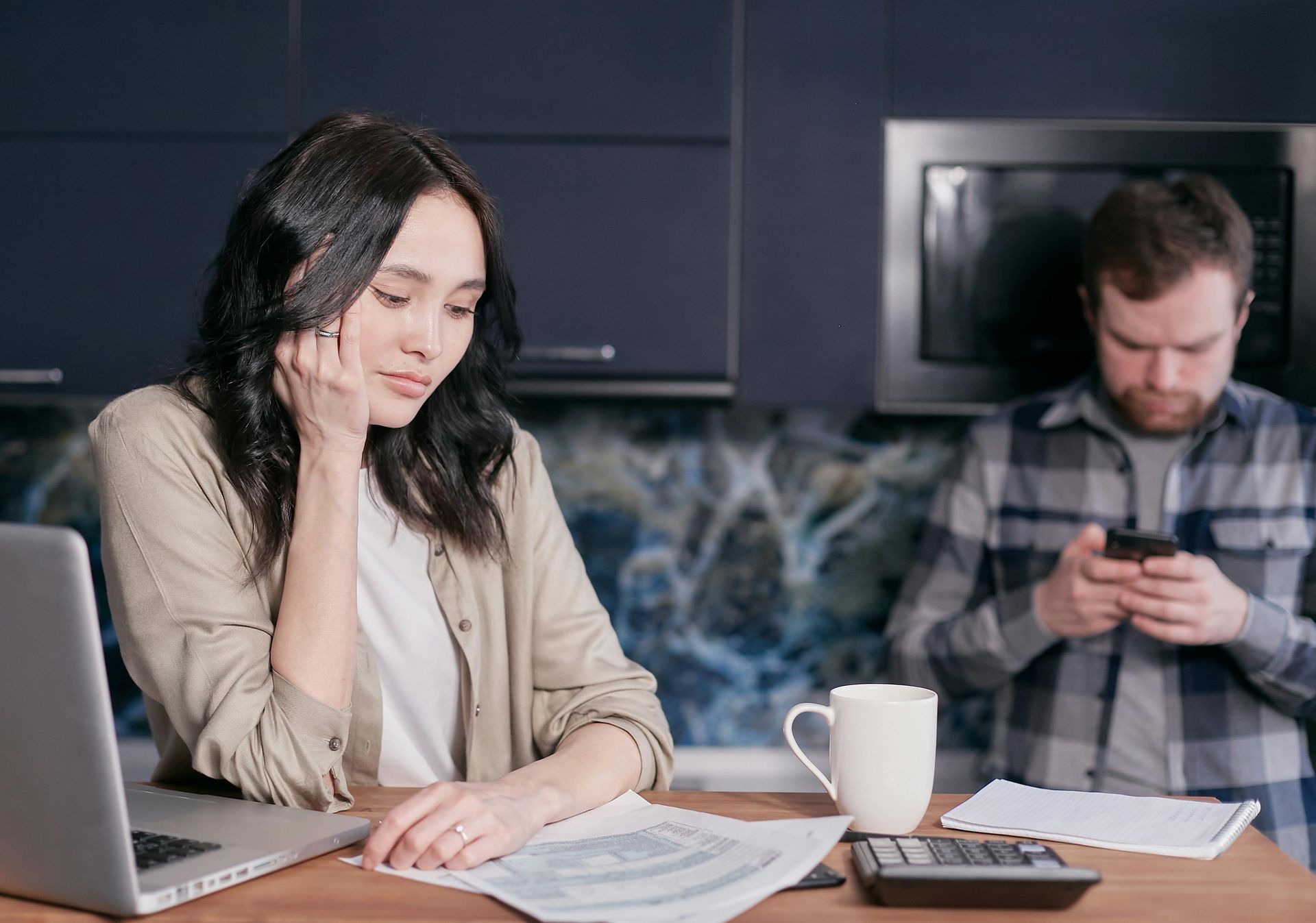Four- and Five-Bedroom Single Family Rental Homes – THE NEW NORMAL

Meeting the Needs of Consumers, Developers and Investors
By Bruce McNeilage
In early 2022 I made a prediction. The three-bedroom house would die a slow death. What was once a staple of American construction and homeownership has become as outdated as ‘70s floral couches and wood-paneled living rooms.
Consumer demand is pushing builders to create more four- and five-bedroom homes. In addition, existing business conditions make four- and five-bedroom homes the best option for developers and investors.
As 2022 played out, my prediction came to fruition. Of the more than 1 million homes constructed in 2022, more than half were four bedrooms or more. That is up from just 25% in 1973. Given current demographics, mortgage rates and work-from-home trends, we expect this trend to continue in the foreseeable future.
Older Renters, Work from Home, Drives Need for More Spacious SFR Homes
From the consumer standpoint, more bedrooms in a Single-Family Rental (SFR) home makes sense. Most families are clamoring for more space. Millennials, the largest demographic cohort, are entering peak child-rearing years and more space is a necessity.
Of course, the global pandemic has played a role in shaping housing trends, as well. More people are working from home and need extra space for one, even two, home offices. More than one-third (35%) of workers with jobs that can be done remotely are working from home all the time, according to a new Pew Research Center survey. This is down from 43% in January 2022 and 55% in October 2020 — but up from only 7% before the pandemic.
That’s a five-fold increase in people who need – or likely want – more home office space. While many companies are still hoping to bring workers back to the office, the trend seems to have leveled out. Work from home, in one form or another, is now an entrenched part of the working world and it will continue to impact housing decisions for consumers, builders and investors, alike.
Even for a family with only two children, a three-bedroom home no longer has the utility needed for the typical family. Many families are caregivers for an aging parent. In fact, according to Pew Research, 23% of US adults are now part of the sandwich generation — people taking care of an aging parent and a child under the age of 18. These people simply want – and need — more bedrooms, whether they are owners or renters.
More families are opting to rent today, as well. The typical age to buy a first home has jumped from 33 years old in 2021 to 36 years old today. It is the oldest ever on record for first time buyers, according to the National Association of Realtors. The rising age is a sign that high housing costs and mortgage rates are pushing homeownership out of reach for younger Americans.
Mortgage rates have shot up so rapidly that the average monthly payment on a 30-year fixed-rate loan rose by more than $600 in one year, according to the Consumer Financial Protection Bureau.
The CFPB says the average payment for a home purchase loan surged more than 46% — from $1,400 per month to $2,045 — over the 12 months ending December 2022. Likewise, the median total of costs and fees for such mortgages spiked almost 22% to nearly $6,000 in the same period. And with mortgage rates rising to decades-old highs this week, the average monthly payment has almost certainly grown in 2023.
This is pushing more people to rentals.
Additional Bedrooms Drive up Rental Income, Profits for Builders, Institutional Investors
From a business perspective, there is almost no reason for a builder or investor to construct or invest in new three-bedroom homes. If a builder has invested in a lot for $100,000, that is a fixed cost. It is not going to change no matter what they build. A 2,200-square-foot house can be configured with three-, four- or five-bedroom options, so why not go for the configuration that brings a higher profit margin?
Won’t an extra bedroom cost more, you ask? Not really. In a 2,200-square-foot house, adding an extra bedroom is a minimal investment up front (approximately $1,000) and will continue to pay for itself over time. Each bedroom can bring an additional $150 per month in rent. That means opting for a four- or five-bedroom house adds $150 to $300 in rent per house per month directly to the bottom line.
For builders putting together a Build-to-Rent subdivision, those numbers multiply quickly. A 30-home rental development with five-bedroom homes will yield an additional $100,000 in rent per year. It is as simple as creating a layout that includes five bedrooms.
Four- and Five-Bedroom SFR Homes Yield High Occupancy, Positive Cash Flow
I have seen this strategy work first-hand. In two of our most recent Build-to-Rent subdivisions, we have opted exclusively for four- and five-bedroom 2,200-square-foot homes in up-and-coming communities. The confluence of demographics (older renters with young families) along with higher home and mortgage costs are pushing more people into high-end rental homes.
One key to success is finding cities with growing populations and desirable amenities. Like any real estate transaction, good schools, youth programs, restaurants and entertainment options are important factors. Once you check those boxes, occupancy falls into place. Our occupancy rates are close to 100%, creating positive cash flow, from a demographic of affluent renters with high credit scores.
Finally, we anticipate our five-bedroom rentals will add value significantly faster than three-bedroom homes. Whether we hold these assets for one, five or 10 years, the return on our initial investment will be significantly higher with a five-bedroom SFR rental strategy.
While no real estate investment strategy is fool-proof, four- and five-bedroom homes show great promise over the next several years. As for the three-bedroom home: You are more likely to see one in the Smithsonian someday.
Bruce McNeilage is co-founder and CEO of Kinloch Partners. He has been in the real estate investment business for 33 years, is a national speaker and guest lecturer on the topic of single-family “Built to Rent” (BTR) housing and started his own BTR business in 2005. Kinloch currently owns assets in the MSAs of: Nashville, Tennessee; Atlanta and Augusta, Georgia; and Aiken, Greenville-Spartanburg, and Columbia, South Carolina. Learn more at KinlochPartners.net.











